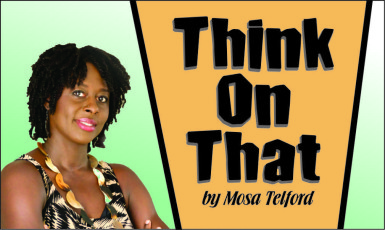
Two things surprised me about Mashramani this year: that the last costume band did not make its way into D’Urban Park into the night and the fact that waste collectors were cleaning while the parade was happening and by the next morning the place was clean. We are finally learning.
But in reflection about what I witnessed of the celebration, I had to remind myself about the significance of Mashramani. While there are those who frown on much of what occurs during the festival, is there a place in society for it?
In 1970, when Guyana became a Republic, Mashramani was born to celebrate our new freedom. First celebrated in Linden, it was then brought to Georgetown. We, the Guyanese people, could finally plot our story–we could be in complete control of the narrative. We had fought our way through slavery, indentureship and colonialism. Much of what we believed, much of what we knew and much of what we practiced were the creations of others. 1970 was the dawn of the advancement of what we had been able to preserve of our diverse cultures and an opportunity to merge as one to further define our Guyanese identity.
There is little I can say about the atmosphere in 1970 because I was not born until the 80s. I get mixed responses when I enquire about the early years. For example, there were the ‘Mass Games’ that were added to Mashramani celebrations. Mass games were gymnastics performances involving school children.
Natalie Hopkinson’s book, ‘A Mouth is Always Muzzled,’ says, “The games were designed to show unity, strength, discipline, and order, emphasizing the collective over the individual, according to Moe Taylor.”
Many who experienced Mass Games laud them, while others express contempt. The games were abandoned after the death of LFS Burnham.
But if we are to look at what Mashramani is now and the role it can play for the individual as well as the collective, it is about freedom. It is about expression of self, expression of the arts and expression of a Guyanese identity. Diverse and unique talents collaborate to create a beautiful display of us in harmony. But it is not only a time for the performing and creative arts. We are free to pause our inhibitions; free to embrace the fact that life is to be celebrated, for taking chances and living in the moment.
My first memory of Mashramani was being terrified by what appeared to be a monster. I screamed and sought my mother’s protection. I was fearful that the man in costume would bring me harm; that fear coupled with my innocence resulted in confusion. Perhaps the music and dancing and so many people were all too overwhelming for a little country girl.
Reflecting on that experience, I had an epiphany. I considered how it could have been used and still can be as a driving force to chart the course of much of my life. We all face monsters. Even the strongest of us seek shelter, safety and companionship in those we trust. And, sometimes, when the monsters are unveiled and beneath the masks are just men and women just like us, vulnerable like us, frightened as much as we are, we wonder, why were we fearful in the first place. We, therefore, can face any obstacle and overcome if we are determined.
Forty-eight years since we became a Republic, can we say that every expression of Mashramani now is truly Guyanese? The answer is no.
The influences of Trinidad’s carnival continues to seep into our creation. I enjoy soca music, but if I heard two of our local soca songs this year I heard a lot. As for calypso, I heard none. I would not be able to recite even a line from the winning calypso, soca or chutney songs this year. And it is not that I do not listen to local music, but I cannot say that I witnessed them being promoted. But maybe I miss a lot because I do not watch television and I only listen to a few radio programmes. I could, however, go to YouTube and find any Trinidadian soca song in a matter of seconds, but as for much of our new music I would not know what to look for.
In recent years, we have incorporated J’ouvert in our celebrations. Isn’t it interesting that the origin of Mashramani was about us celebrating our power to define our own destiny and yet 48 years later here we are copying and borrowing? Is it that our creations are not good enough? Are our soca, calypso and chutney singers not up to par with those in the rest of the Caribbean? Who borrows from us? Who mimics us?
With a private carnival planned for May, I wonder what it portends. While there are carnivals around the world, I wonder if we would shift the focus from Mashramani to support and build carnival.
Mashramani is a Guyanese brand. Sure, globalization continues, but are we going to allow everything we created to be erased until there is nothing we can recognize as truly ours? We must be in the business of promoting ourselves and Mashramani is a great opportunity for this. It is much more than partying even though that aspect of it is people’s expression of their freedom and therefore has its place.
We must, however, continue to remind ourselves why we celebrate Mashramani and ask ourselves if what it has become truly reflects the spirit of what must have been in 1970.






